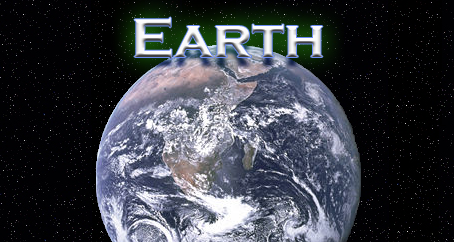How Did Earth Form?

Planet Earth was formed 4.6 billion years ago from the same nebula cloud of gas and dust that formed the Sun and the other planets. However, Earth then was very different from Earth now, and it would have been impossible for life to exist on it. In fact, it is only quite recently in the Earth's 4,600,000,000 year long life that life, resembling modern-day life, has been possible, first with the dinosaurs over 200,000,000 years ago and now with humans and other animals. The Earth is still being formed now. It still has a molten centre which causes volcanoes to occasionally erupt, and plates on the surface are constantly "swimming" meaning that they collide with other plates and cause earthquakes. On this page, we will look at how Earth may have settled to become like the planet it is now.
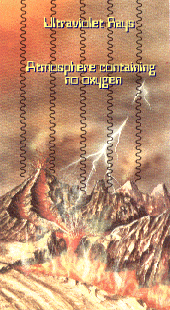
4 Billion Years Ago
This is an artist's impression of what Earth looked like 4 billion years ago. The planet has no oxygen in its atmosphere and no ozone layer, so poisonous ultraviolet rays from the Sun hit the surface directly. The molten centre of the planet is still extremely hot, and volcanoes erupt constantly, forming the mountains and landscapes of the planet. Water droplets, contained in the planet's atmosphere, cannot settle as liquid or ice because the surface is so hot.
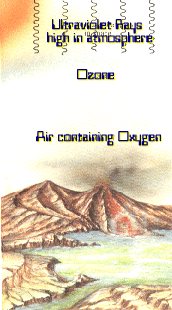
1 Billion Years Ago
The planet has cooled and volcanic eruptions are less common. Water is now allowed to settle, and forms oceans. Green algae forms in the water, which photosynthesises and produces oxygen which is put into the air. The oxygen forms a layer of ozone which protects the Earth from poisonous ultraviolet rays from the Sun. Land drifts apart to begin forming continents.
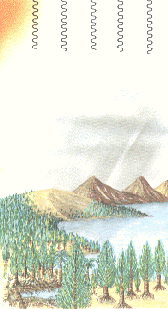
400 Million Years Ago
Life begins developing in the form of trees and plants. These produce more oxygen. Earth has a cooler temperature, with changeable weather. This weather (rain, snow, wind, frost) causes the tops of the ancient volcanoes to wear away, creating lower ground. Dinosaurs eventually develop, ruling the planet. Flowers are later formed, along with insects.
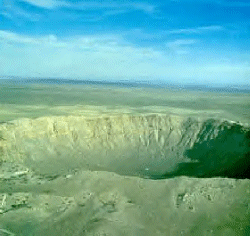
65 Million Years Ago
Life was wiped off the face of the planet! It is believed that a huge meteorite or comet hit the Earth's surface, causing clouds of dust which suffocated the dinosaurs and other creatures on the planet. Conditions on the planet were suffocating as poisonous chemicals were unable to leave the planet's atmosphere, and life-giving energy from the Sun could not enter. After settling again, the Earth was suitable for life, and the ancestors of human beings developed.
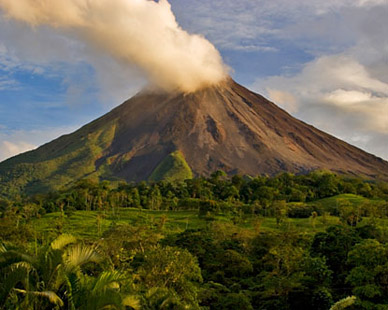
Today
Earth is still developing. Volcanoes still erupt, the earth still shakes, weather still forms landscapes. Creatures evolve. Some go extinct, others adapt to the changing planet. Nobody knows what the future holds. The air is becoming more polluted, and the temperature on the planet is gradually rising. Earth remains a target for meteors, comets and asteroids travelling through space. There is always a chance that one may hit the planet eventually and destroy life as we know it. Perhaps, the planet will be reborn again as the dust settles.
